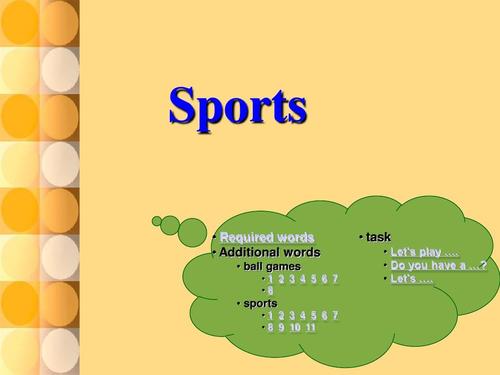勤读这是学好英语的法宝之一。朗读的内容主要是课本,也可以是做过的习题。课件网小编高一频道为你整理了以下文章,欢迎阅读与借鉴!

【英语必修二高一知识点总结合集一】
Unit 1 Friendship
1. be good to 对……友好 be good for 对……有益;be bad to…/be bad for…
2. add up 加起来 增加
add up to 合计,总计
add… to 把……加到……
3. not…until/till 意思是“直到…才”
4. get sth/sb done 使……完成/使某人被……
5. calm down平静下来
6. be concerned about 关心 关注
7. 当while, when, before, after 等引导的时间状语从句中的主语与主句的主语一致时,可将从句中的主语和be动词省去。
While walking the dog, you were careless and it got loose.
8. cheat in the exam *
9. go through 经历;度过;获准,通过
10. hide away 躲藏;隐藏
11. set down 写下,记下
12. I wonder if….. 我不知道是不是….
12. on purpose 故意
13. sth happen to sb 某人发生某事
sb happen to do sth 某人碰巧做某事
it so happened that ……正巧 碰巧
14. It is the first (second…) that… (从句谓语动词用现在完成时)
15. in one’s power 处于……的控制之中
16. It’s no pleasure doing…. 做…..没有乐趣
It’s no good/ use doing sth. 做某事是没好处/没用的
17. She found it difficult to settle and calm down in the hiding place. it做形式宾语
18. suffer from 患…病;遭受
19. so…that… /such…thay…
20. get tired of…. 对…感到劳累 疲惫
21. have some trouble with sb/sth. 在……上遇到了麻烦
22. get along with sb/sth. 与某人相处
23. ask(sb)for advice. (向某人)征求建议
24. make 后接复合宾语,宾语补足语须用不带to 的不定式、形容词、过去分词、名词等。常见的有以下几种形式:
make sb. do sth.让 (使)某人做某事
make sb. /sth. +adj. 使某人/物…
make sb./ oneself +v-ed 让某人/自己被…
When you speak, you should make yourself understood.
make sb.+n. 使某人成为…
25. alone /lonely. 单独的/孤独的
26. I would be grateful if… 委婉客气提出请求
27. Why not do….. = why don’t you do…
Unit 2 English around the world
1. because of 因为…… (注意和because 的区别)
2. even if (= even thoug)即使,用来引导让步状语从句
3. come up 走上前来,走近,发生,出现 come up with 追上,赶上,提出
4. communicate with sb 和某人交流
5. be different from… 与……不同
be different in … 在……方面不同
Most of my projects are different in performance.
我多数作品的演奏风格都不同。
6. be based on 以……为基础
7. at present 目前,眼下 for the present眼前;暂时
8. make (good/better/full)use of
9. the latter后者 the former 前者
10. a large number of 大量的 the number of …的数量
11. such as 例如
12. hold on 坚持住,握住不放;(打电话时)等—会
13. … you will hear the difference in the way(that/ in which) people speak.
你会听出人们在说话时的差异。
14. play a role/ part (in) 在…中担任角色;在…中起作用;扮演一个角色
15. the same …as… 与……一样
16. at the top of…在…顶上
at the bottom of 在……底部
17. bring up 教养,养育;提出
18. request sb (not) to do sth. 要求某人做/不要做某事
19. be satisfied with…对……感到满意,满足于
20. suggest v. (request,insist…)
I suggested you do what he says. 我建议你按照他说的去做。
I suggest you not go tomorrow. 我想你明天还是不要去了。
His pale face suggested that he was in bad health. 他苍白的脸色暗示了他身体不好。
注意:insist 意思为“坚持要求”时后面的that从句用虚拟语气;如果insist 意为“强调,坚持认为”的时候,从句可以用任何所需要的时态。例如:She insisted that she didn’t tell a lie.她坚持认为她没撒谎。
21. according to…. 按照… 根据…
Unit 3 Travel journal
1.prefer
Prefer doing …to doing…
Prefer to do rather than do
2.advantages /disadvantages 优势/劣势
2.Ever since middle school, my sister Wang Wei and I have dreamed about taking a great bike trip. 从高中起,我姐姐王维和我就一直梦想做一次伟大的自行车旅行。
连词since 引导的时间状语从句用一般过去时,介词since 与时间点连用
It is/has been+一段时间+since+一般过去时 自从……至今已经多久了。
3. persuade sb to do sth= persuade sb into doing sth 说服某人做某事
4. 强调句型 It is/was+被强调部分+that/who
强调句型可以强调除谓语动词以外的任何句子成份。一般来说,如果被强调部分是人时,用连词that或who;如果被强调部分是物,只能用连词that。
not … until 的强调句
5.be fond of 喜欢,喜爱
6. Although 尽管,虽然,引导让步状语从句
① although 从句多在句首, though 从句可在主句前、中、后任何位置,而且though 可以作副词用于句末,作“但是,不过”讲,而although 无此用法。
② as though(仿佛,好像),even though(即使,尽管)中不能用although。
③ though 引导的让步状语从句可以倒装(将表语、状语、情态动词后的动词原形前置到句首,此用法同as),而 although 不可以。
7. insist on doing sth/ sth. 一定要、坚持主张
She insists on getting up early and playing her radio loudly.
她老是一大早起来把收音机音量开大
11.care about 关心 在乎
care for 喜欢,照料,照顾
12.change one’s mind 改变主意
13. experience 经历/经验
14. Once 可作为从属连词,作“一(旦)……就……”解,连接一个表示时间的状语从句。从句中常用一般现在时\现在完成时表将来。
Once you have begun you must continue.
15. give in 让步 give up 放弃
16. instead of 代替,而不是
17. make up one’s mind to do下定决心做某事
18.a large parcel of 一大包
19.as usual 像往常一样
20.put up our tent 搭帐篷
21.stay awake 睡不着,醒着 stay up 熬夜
22. for company 做伴
23.lie beneath the stars 躺在星空下
24.can hardly wait to do=can’t wait to do迫不及待做某事
25.go in the right direction 走正确的方向
26. at a very slow pace. 以很慢的速度
27.be similar to 类似于
28.afford to do sth 付得起,能承担
29.be tired from 因……而疲劳 be tired of 对……厌倦
30. be in high spirits 喜气洋洋,兴高采烈
31.come true 实现,成真
32. give sb some advice on doing...
33. a guide to… ……的指南
34.on a tour 在游览中,在巡演中
35.in detail 详细地
【英语必修二高一知识点总结合集二】
一. 直接引语和间接引语
(一)直接引述别人的原话,叫做直接引语;用自己话转述别人的话,叫做间接引语。间接引语一般构成宾语从句。直接引语必须放在引号内,间接引语则不用引号。直接引语改为间接引语时,除将引语部分变成宾语从句外,还必须对直接引语中的人称、时态、指示代词、时间状语、地点状语等进行改变。
1. 时态的变化:直接引语变为间接引语时,通常受转述动词said, asked等的影响而使用过去化的时态,即把原来的时态向过去推,也就是一般现在时变为一般过去时,现在进行时变为过去进行时,等等。例如:
Tom said to me,“My brother is doing his homework.”
→Tom said to me that his brother was doing his homework.
2. 人称代词、指示代词、时间状语、地点状语等等的变化: 根据意义进行相应的变化,例如:
She asked Jack,“Where have you been?”
→She asked Jack where he had been.
He said,“These books are mine.”
→He said that those books were his.
(二)直接引语改为间接引语时,都使用陈述语序,但是因为原句的句式不同,所以变成间接引语时所用的连词会有所不同。直接引语如果是一般疑问句,用连接词whether或if;如果是特殊疑问句,则用疑问词引导间接引语。转述的动词一般用asked,可以在其后加上一个间接宾语me, him, her, us等。如:
She said,“Is your father at home?”
→She asked me if/whether my father was at home.
“What do you do every Sunday?”My friend asked me.
→My friend asked me what I did every Sunday.
直接引语如果是祈使句,改为间接引语时,要将祈使句的动词原形变为带to的不定式,并在不定式的前面根据原句的语气(即请求或命令)加上ask, tell, order等动词,如果祈使句为否定式,则在不定式前加not。其句型为:ask / tell / order someone (not) to do something. 例如:
She said to us,“Please sit down.”
→She asked us to sit down.
He said to him,“Go away!”
→He ordered him to go away.
He said, “Don’t make so much noise, boys.”
→He told the boys not to make so much noise.
二. 各种时态的被动语态
被动语态概述
被动语态的概念:它是动词的一种形式,表示主语与谓语之间的执行或被执行关系。主动语态表示主语是谓语动作的执行者,例如:They saw the little boy crying by the river. 被动语态表示主语是谓语动作的承受者,例如:The little boy was seen crying by the river.
被动语态的构成
被动语态的形式是由“助动词be+动词的过去分词”构成。助动词be随着主语的人称、数、时态等的不同而变化。几种常见时态的被动语态形式如下:
1. 一般现在时 am/is/are + 过去分词
例如:Rice is planted in the south of China.
2. 一般过去时 was/were + 过去分词
例如:These trees were planted the year before last.
3. 一般将来时 will/shall + be + 过去分词
例如:A sports meeting will be held next week in our school.
4. 现在进行时 am/is/are + being + 过去分词
例如:Your radio is being repaired now.
5. 过去进行时 was/were + being + 过去分词
When he got there, the problem was being discussed.
6. 现在完成时 have/has + been + 过去分词
His work has been finished.
Has his work been finished? Yes, it has. / No, it hasn’t.
7. 过去完成时 had + been + 过去分词
注意:
1.除了be之外的其它系动词如get, stay等也可以和过去分词构成被动语态。例如:Their questions haven’t got answered.
2. 含有情态动词的谓语变成被动语态使用“情态动词+ be + 过去分词”结构。例如:
More attention should be paid to the old in this country.
This work can’t be done until Mr. Black comes.
3. 含有“be going to”, “be to”等结构的谓语,其被动语态分别用“be going to + be + 过去分词”和“be to + be + 过去分词”。例如:
The problem is going to be discussed at the next meeting.
All these books are to be taken to the library.
4. 被动语态与系表结构的区别:“连系动词+用作表语的过去分词”构成的系表结构,与被动语态的形式完全一样,所以应注意它们的区别。被动语态中的过去分词是动词,多强调动作;系表结构中的过去分词相当于形容词,多强调状态。前者通常可用by 引出动作的执行者,而后者则不可以。例如:
The map was changed by someone.(被动结构)
That custom remained unchanged for many centuries.(系表结构)
系表结构中的过去分词通常可被very修饰,被动语态中的过去分词往往要用much修饰。
例如:
He was very excited.(系表结构)
He was much excited by her words.(被动结构)
5. 主动形式表被动意义。有些动词的主动形式有被动意味,如 open, read, sell, shut, wash, wear, write等。此时句子的主语一般是物。例如:
These books sell well. 这些书很畅销。
The door won’t shut. 这门关不上。
The clothes wash well. 这些衣服很好洗。



